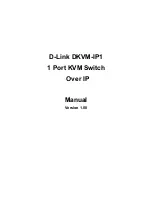
Workgroup Switches
T
o
k
e
n-Ring
www.networking.ibm.com
125
C
The IBM 8270 supports a maximum of
1700 active Token-Ring LAN station
addresses per port.
2-Port Token-Ring/Enhanced Fiber
Universal Feature Card (FC 5087, PN
85H5087):
The 2-port Token-Ring card
provides two Token-Ring ports for each
UFC installed in the IBM 8270. Each or
all of these UFC ports can be config-
ured to be used in multilink TokenPipe
connections and/or configured to be
included in virtual switches. These UFC
ports support address filters, support
BootP/TFTP, Telnet, or SNMP sessions,
and can participate in the TokenProbe
facilities of the IBM 8270 (either as
monitoring ports or as monitored ports).
The 2-Port Token-Ring/Enhanced Fiber
Universal Feature Card provides two
Token-Ring multimode fiber connec-
tions via ST connectors. Each port on
the 2-Port Token-Ring Fiber UFC is a
switched port that can be connected to
one of the following:
• A shared Token-Ring segment via a
fiber Ring-In (RI) or Ring-Out (RO) port
on a Token-Ring concentrator or hub
that forms the segment, for example, the
IBM 8230 Token-Ring Network Con-
trolled Access Unit, the IBM 8239
Nways Token-Ring Stackable Hub or
the IBM 8250 or 8260 Multiprotocol
Intelligent Hub. Token-Ring segments
with IBM 8270s connected in this
manner will utilize both the backup ring
path as well as the main ring path.
Consequently, the redundant path is in
use and not available for ring recovery.
• A Token-Ring fiber port on another IBM
8270. This is a TokenPipe connection
that can be combined with other Token-
Ring connections (UTP/STP or fiber) to
another IBM 8270 to form a multilink
TokenPipe. When used as TokenPipe
connections, these fiber ports can be
configured to be full-duplex.
Each of the Token-Ring fiber ports is
independent and can be used in any
mix of the above connections. However,
unlike Token-Ring UTP/STP ports, 2-Port
Token-Ring Fiber UFC ports do not
support the following connection types:
• Direct fiber connection between the
switch and a Token-Ring adapter
• Fiber connection between switch port
and Token-Ring lobe port on a Token-
Ring concentrator or hub
When more than one of the Token-Ring
fiber or UTP/STP ports are connected to
the same physical Token-Ring segment
(for example, for redundant access), the
Spanning Tree support in the IBM 8270
will configure only one of the ports in
forwarding mode and the rest of the
ports will be in blocking mode.
In addition to the ST connectors for the
Token-Ring fiber ports, there are nine
LEDs (one set of three for each port
plus three for the Universal Feature
Card overall) on the faceplate of this
Universal Feature Card that indicate
the operational status of the UFC and
the ports.
MSS Client UFCs (FC 5205, FC 5206):
The Multiprotocol Switched Services
(MSS) Client UFCs are intended for use
in Token-Ring networks that have an
ATM backbone.
There are two versions of the MSS
Client UFC: one that provides a
155-Mbps multimode fiber ATM port
(FC 5205) and one that provides a
155-Mbps single mode fiber ATM port
(FC 5206). Each occupies two slots in
an IBM 8270.
MSS Domain Client UFC (FC 5207):
Similar in function to the MSS Client
UFCs. Requires an external ATM-155
UFC for connection to the network.
Both UFCs support:
• Layer 3 Routing/Switching (for IP, IPX,
Appletalk, and Banyan Vines) using an
imbedded high speed Power PC
603e™ processor. Additionally, this
function supports RIP, RIP V2, OSPF, BGP,
DVMRP, and NHRP protocols.
• VLAN support. In addition to MAC-level
VLANs, this function allows you to group
users by the type of protocol that they
are running. Distinguishable protocols
are IP, IPX, Appletalk, and NetBIOS. IP
and IPX VLANs can be divided by
Subnet or network ID.
• Source-Route Bridging. There is only
one SRB function active in the 8270 at
any time. When the SRB function of the
UFC is active, its configuration param-
eters take precedence over those of
the SRB function in the base switch.
• LAN Network Manager (LNM) agents.
These agents act as surrogates for the
LAN Network Manager in the manage-
ment of the physical Token-Ring
segments attached to the switch (not
applicable to the emulated Token-Ring
segments).
• Sophisticated frame filtering facilities.
In addition, the MSS Client UFCs
(FC 5205, FC 5206) support:
• LAN Emulation Client. These UFCs
provide near ATM media speed Layer 2
forwarding (using hardware assis-
tance). This function allows the MSS
Client UFCs to use ATM Forum Compli-
ant LAN Emulation for LAN traffic. The
MSS can concurrently join multiple
different emulated LANs. With initial
versions of this function, traffic can be
source-route bridged or routed be-
tween the switch’s Token-Ring ports
and emulated Token-Ring LANs. This
LANE Client can operate in QoS-II
environments.































